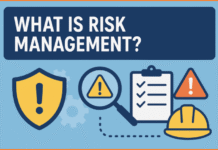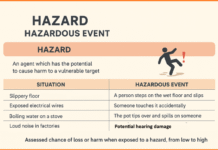
Contents
Occupational health and hygiene
Health of the worker is influenced by the following factors:-
1- Occupational factors ( work Environment )
2- Non-Occupational factors ( food, clothing, water, housing,diet habits, personal habits like smoking, alcohol consumption etc.) Interactionof the worker with his working environment may result in impairment of his healthleading to work related illness also known as occupation diseases.
The hazards in working environment can be classified broadlyas follows:

- Physical
- Chemical
- Biological (infectious and parasiticagents)
- Social
Occupational Hazards Associated with work Environment
Physical- workplaceclimate, Lighting and Noise
Working conditions:
The work area temperature, the amount and quality of light and levels of noise are common working condition factors found in all workplaces.
The workplace climate:
The climate is the condition of the environment surrounding us. It can mean the general conditions in a geographical area, the local atmospheric conditions in a specific work place.
Atmospheric Pollution
Air- Borne Particles
There are many substances at our workplaces as
The ability of the body to render inhaled particles harmless depend upon:
The size of the particles
The nature of the particles
The quantity of the particles
The time spend in that workplace.
The smaller the particles are, the further into the lungs they reach. Some dust can even enter as the tiny air spaces which make up the air sacs, thousands of which form a lung.
The chemical compositions of the substance
Dust
Dust, fumes and smoke are the most common types of air-borne particles found in workplaces. They are formed when working with different materials. Inhaled dust accumulates in the lungs and causes a tissue reaction. This lungs disease is called “ Pneumoconiosis"
Gases
Many gases and vapors have a sharp or irritating smell. This smell is an early warning signal. The gases which do not give a warning signal or which rapidly reduce our ability to realize or assess the danger are even more dangerous. Gases may spread into the workplace air through various chemical processes or through from gas cylinders. Other irritant gases are phosgene and the nitrous gases. They do not provide a warning signal in the
1. Other harmful substances.
Arsenic and it’s compounds, phosphorus and it’s compounds, beryllium, cadmium, chromium, manganese, nickel, cobalt, osmium, platinum, selenium, delirium, vanadium.
2. Aromatic carbon compounds
Benzene, hexachloro benzene, toluene di-isocyanate, phenol, penta chloro phenol, quinone and hydro quinone. Aromatic nitro, amino and pyridium derivatives.
3. Aliphatic carbon compounds
They are alcohol, Nitro-glycerine, Nitrocellulose, Dimethyl nitrosamine, Halogenated Hydrocarbons. The glycol group. Acrylonitrile, Acrylamide, Vinyl chloride workplaces etc.
4. Noxious Gases Classification
A. Simple asphyxiants: N2, CH4, CO2 etc.
B. Chemical asphyxiants: CO, H2S, HCN etc.
C. Irritant Gases: NH3, SO2, NO2, CI2,COCI2, etc.
D. Systemic poison: CS2, Nickel Corbonyl, phosphine ,Stibine etc.5.Dusts





Need occupation health presentation. Pls help
How much noise can a human ear tolerate?
Up to 75 db for 8 hours.
Respected sir
I would like to thank for regular post HSE information by email but I have one issues please help me
How to make HSE improvement plan
Regards
Noor Alam
https://www.shell.co.uk/business-customers/upstream-oil-and-gas-infrastructure/contracting-and-procurement/contractor-portal/_jcr_content/par/textimage.stream/1426853775559/2595d9a74d6f0f490b095b6552b1501074bafa942656501a0beb85b07f402603/hse-improvement-plan.pdf